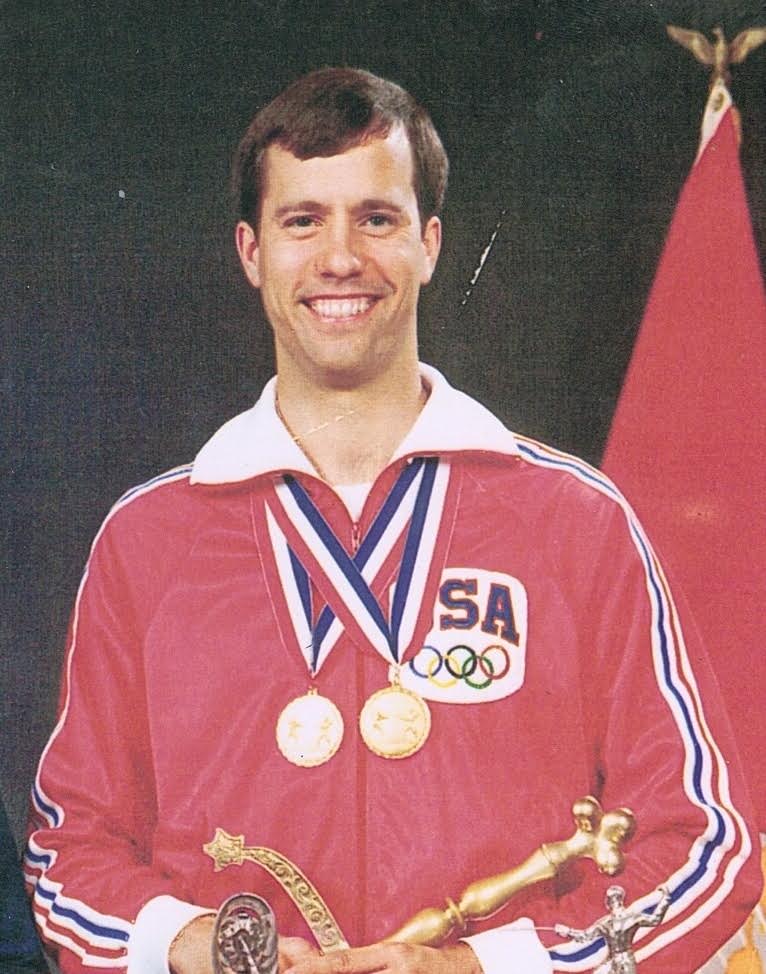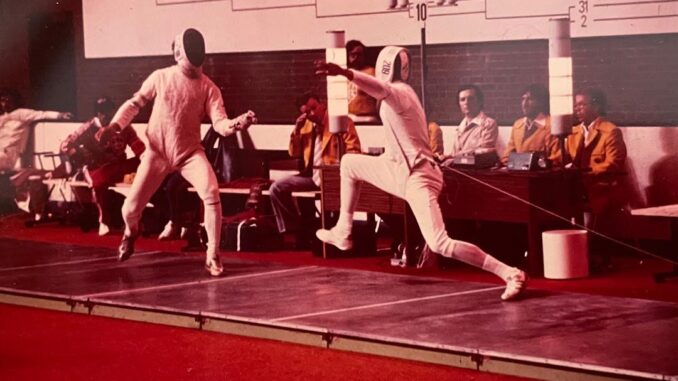
EN GARDE!
By Bill Kent
It’s one of the first things people notice. Anyone who shakes Ed Donofrio’s hand encounters “The Grip.” When he folds his hand around yours, he has you until he wants to let go.
“My right hand’s bigger than my left,” said Donofrio, spry and energetic for his 72 years. “In fencing, you have to have just the right grip. Not too loose. Not too tight. The rest of you stays loose so you can parry and lunge. But the grip has to be just right.”
For more than 50 years, Donofrio has been a titan of the sport of fencing. And for all that time, this Olympian, two-time national champion and USA Fencing Hall of Fame member hasn’t gone a day without using that grip. But these days, his oversized right hand is more likely to clamp down on a leash when his dog wants to chase a squirrel around his Belmont Green neighborhood in Ashburn.
“Her name is Happy and she’s a rescue,” Donofrio said. “She just turned 11 and she gets walked incessantly – probably more than she wants. Dogs are great animals. I just love ’em.”
LEARNING THE SPORT
Although swordplay is nearly as old as the use of weapons, modern fencing has its roots in the late Renaissance, when instructors developed distinct training styles to teach poise, balance, strategy and agility while keeping students alive and unhurt.
The epee, foil and saber swords used in today’s fencing are not sharp and the ends are blunted. Fencers say “En garde” as a match begins. Points are scored when the blade touches (“Touché!”) an opponent.
Of course, Donofrio had no idea about any of this when he first heard about fencing. Born in Brooklyn, N.Y., and raised on Long Island, his inspiration came from the silver screen.
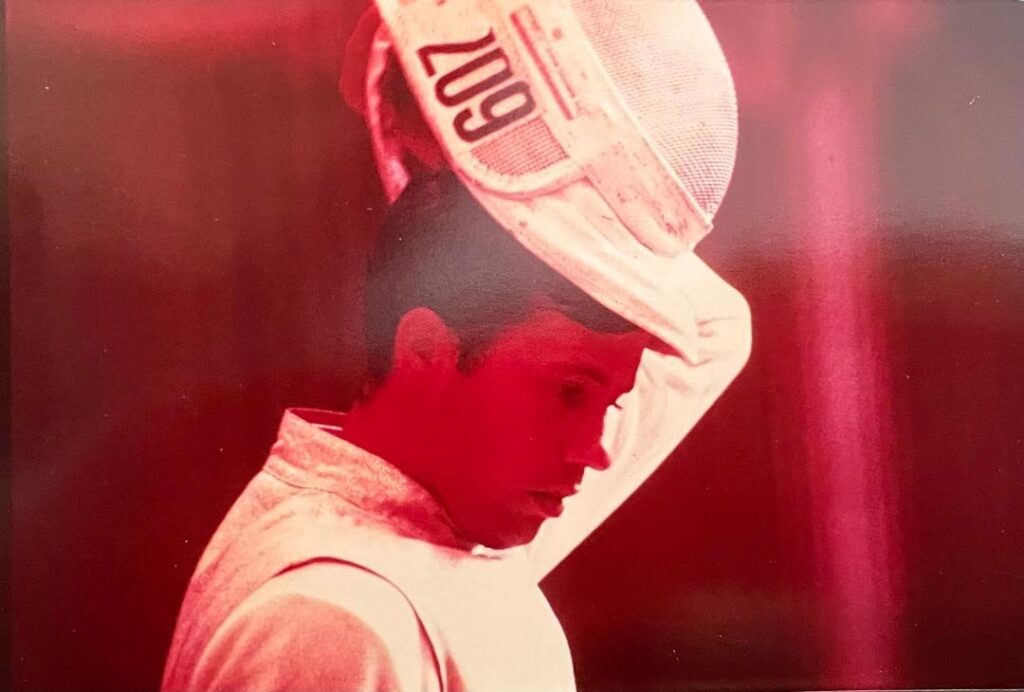
“I was 14. My best friend heard about it, and I thought I’d be like Zorro,” he said.
He joined the fencing club at his junior high school and continued to fence in high school. He found it less like the adventures of the famous swashbuckling Zorro, more like a group of really “great people” who connected him to other fencing teams and other players. One of those fellow fencers was a young Neil Diamond.
Donofrio says he and the “Sweet Caroline” singer/songwriter still keep in touch. “We didn’t fence against each other, but we went to the same club in New York,” Donofrio recalled. “He fenced saber, I fenced foil. Every Christmas, a group of us still get together, and every year he comes. He wouldn’t miss it.”
THE CLIMB
For Donofrio, who wanted to be an engineer, fencing was just something cool to do as an extracurricular activity.
“For years, I lost just about every match I entered,” he said. “One of the first things fencing taught me was not to take losing seriously. You learn from your mistakes and move on.”
And learn he did. He began to study the fencers who had bested him. And to his surprise, he started to win. “I was in my senior year, and everything I learned from making mistakes began to come together. I still lost matches, but I started winning more.”
Donofrio went to the U.S. Naval Academy, where he joined the fencing team. And just like in high school, he continued to distinguish himself. Still, he never could have guessed that he would soon become a national champion, compete in the Olympics, and play poker with a member of the Rolling Stones.
BECOMING AN OLYMPIAN
At a competition in Cherry Hill, N.J., that would crown the national champion and determine who would represent the United States at the 1976 Olympic Games in Montreal, Donofrio found himself on a winning streak.
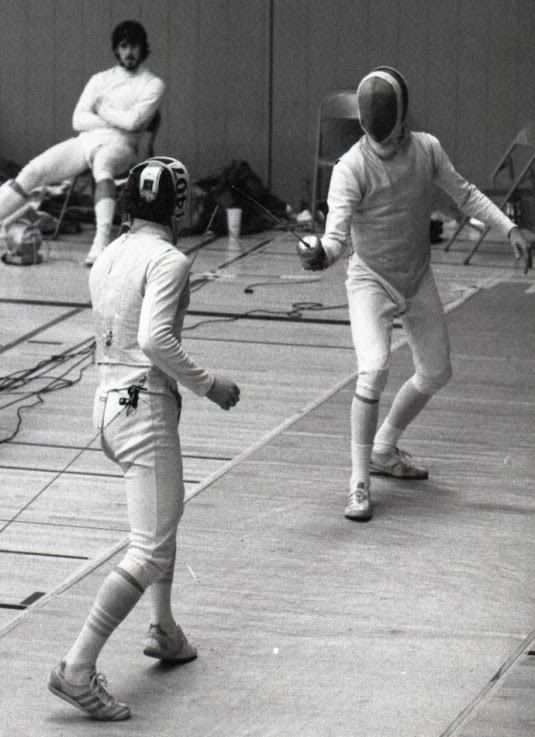
“I was doing so well in points that at the semifinals, people started to come up and congratulate me … I couldn’t figure out why,” he said. “Then I saw I had more points than anyone else. I was going to the Olympics.”
Three weeks later, he was in Montreal at the Olympic Village. “I was wearing the United States team uniform, and people were coming up to me asking for my autograph. I saw President Gerald Ford there, George Foreman and Mike Spinks. Mick Jagger played poker with our team. He got a pass to be in the village and he was around the whole time. Good guy.”
Donofrio doesn’t remember who won the card game, but he knows he won many of the fencing matches he entered, finishing as a semifinalist out of some 140 Olympic fencers from around the world.
NEW COACH IN TOWN
After graduating from the Naval Academy, Donofrio did a tour of duty in Vietnam and then left the Navy to take a series of manufacturing design jobs. But he kept on pursuing competitive fencing – a passion that took him to France, Germany, Italy, Canada and Argentina, where, coincidentally, he met actor Guy Williams, who once played Zorro on television.
Donofrio eventually moved to Ashburn with his wife, marketing executive Donna Seeker, and their six children. Wanting to be his own boss, he started a commercial and residential property inspection company with his son, Joey. In his free time, he polished up his golf game and started volunteering as a fencing coach at his beloved Naval Academy.
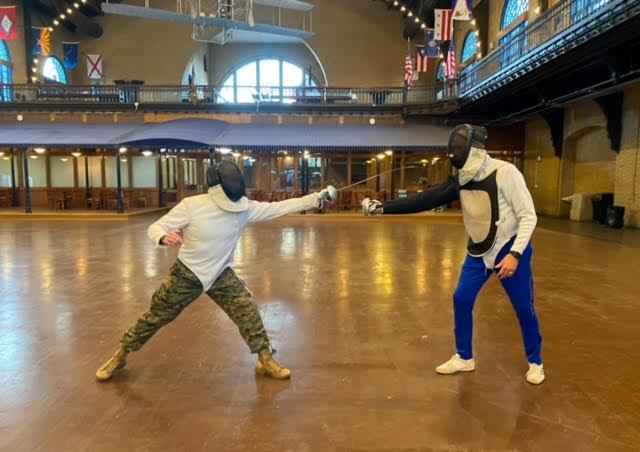
He also coaches aspiring fencers right here in Ashburn.
“When Ed walked into our club, I had no idea who he was,” said Dr. Amy Papadopoulos, the founder of the Loudoun International Fencing Club. “But I knew he was somebody. He has a presence.”
She remembers Donofrio observing one of the club’s instructors. “He stood there for a long time and said nothing, but I could tell Ed didn’t like what he saw,” Papadopoulos said. “He came to me and said that if I fired that teacher, he would teach that class, and continue to teach – and coach – for free.”
She did, and Donofrio taught and coached at the club until it closed due to the pandemic in 2020. “Ed was the best,” Papadopoulos said. “He could relate perfectly to teenagers.”
‘NOT JUST FENCING’
The word got out that one of the best American fencers was living in Ashburn, and Ed began to get requests from parents to coach their kids.
One student he took on was Ryan Rodriguez, son of Dr. K. Michael Rodriguez, a physician with Broadlands Family Practice.
“I used to sit and watch him coach the kids,” Rodriguez said. “There were a lot of life lessons about tenacity, competing, striving to improve, sportsmanship, but also friendship and – through example – giving back to your community. All these things add up to helping kids gain confidence in themselves – not just in fencing.”

This summer, Donofrio and his family flew to Phoenix, where he was inducted into the USA Fencing Hall of Fame. Donofrio’s son, Joey, who now lives in Brambleton, teared up when he introduced his father to the audience.
“My father is my hero,” he said. Preparing for the speech had helped this son, who never caught the fencing bug, realize just how focused and dedicated his father was to his chosen sport.
“All my life, my father had just kept telling me whatever you want to do you can accomplish if you put your mind to it,” the younger Donofrio said. “You learn that no one is born great. Becoming great takes a tremendous amount of work.”
Ed Donofrio is as surprised as anyone by his success and the accompanying accolades. In addition to the USA Fencing Hall of Fame, he has also been inducted into the Naval Academy’s Athletic Hall of Fame.
And there are other honors, too.
“I’ll tell you when I knew I had finally made it big,” Donofrio said with a chuckle. “A sweatsuit I wore to a competition – I don’t know what happened to it or how they got it – is now hanging in the Museum of American Fencing in Shreveport, Louisiana. Honestly, how can you top that?”
Bill Kent is a prolific writer and author whose articles have appeared in The New York Times, the Philadelphia Inquirer, Kirkus Reviews and elsewhere.

